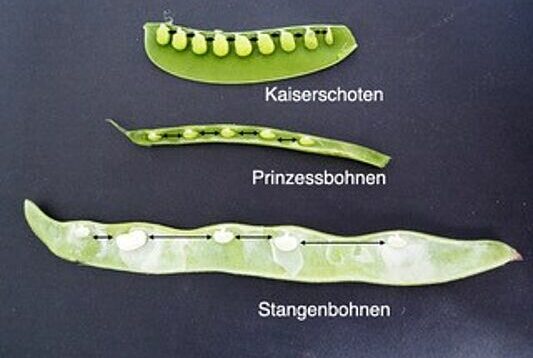


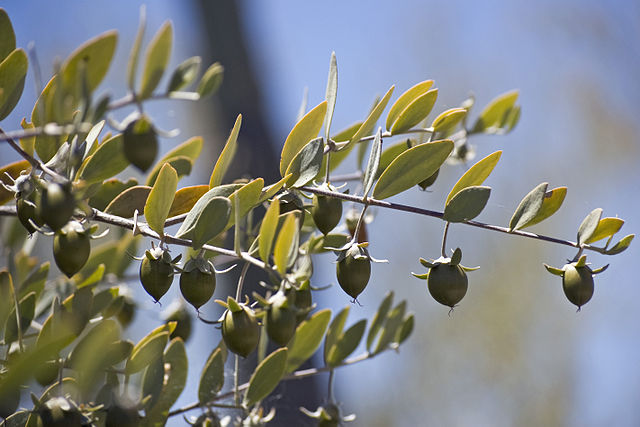
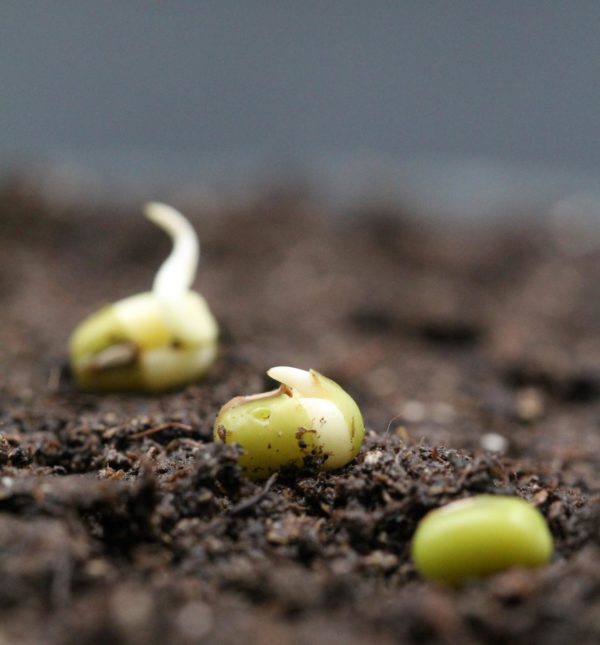
Food biodiversity needs both systems, just like pandas need zoos and bamboo forests, say Marie Haga and Ann Tutwiler.
The efforts of many organisations mean that most of us understand the importance of conserving the biodiversity of wild animals and their habitats. But few of us think about food in the same way we think about pandas, even though the issues are much the same.
The effective and efficient conservation of agricultural biodiversity — the biodiversity that’s important for providing the food we eat — is vital to meeting the global challenges of food and nutritional security for an expanding world population under the threat of climate change, and growing pressures on land and water.
And as with pandas and other wild animals, conservation of agricultural biodiversity can and must be done both in the laboratory and in the field.
If you had a choice, would you rather see a panda in a zoo, or in the bamboo forests of southern China?
For most of us, seeing wild and endangered animals in their own habitat and watching how they behave, adapt and survive in their natural surroundings would be the preferred choice. But, the role of zoos in conserving wild and endangered animals is equally important.
Many zoos are home to breeding programmes. These can help re-introduce animals into wild areas from which they have disappeared, and maintain the genetic diversity of small populations of threatened species. Zoos that are well-run carry out vital conservation research and can increase public support for conservation. And the only chance that most of us (and our kids) will have to see a panda is in a zoo.
Much in the same way, and for several decades now, dedicated researchers around the world have invested a great deal of effort in collecting and storing the seeds of different varieties of crops in genebanks, for what’s called ex situ conservation. Their collective work has created a precious global collection of over seven million seed, tissue, and other samples in many global and national genebanks.
“The problem is that systems of in situ and ex situ conservation have been largely disconnected for some time. Some conservationists even see them as antagonistic.
And while devotees of one side argue with the other, the diversity that underpins the food we eat is lost both in genebanks and in farmers’ fields.”
Marie Haga and Ann Tutwiler
At the same time, some concerns that apply to zoos — that they cannot maintain the evolutionary dynamics which allow ‘wild’ animals to evolve and adapt, for example — also apply to seed banks.
Researchers are increasingly recognising that in situ conservation is also important: maintaining crop and livestock diversity in farmers’ fields and farms, gardens, orchards, and the natural landscapes in which these are embedded.
Ex situ and in situ conservation each has their benefits.
It is relatively cheap to maintain crop diversity in a genebank, where it is safe from the vagaries of changing climates, and is readily accessible for research and breeding. But crop diversity stored in genebank is less accessible to farmers, and is not exposed to changing environments — which means it does not evolve and adapt.
On the other hand, crop diversity in farmers’ fields and under other in situ conditions, continues to evolve and adapt as a result of natural and human selections. As it evolves and adapts, this genetic diversity contributes directly to the resilience and sustainability of agricultural systems, as well as to farmers’ livelihoods and to their empowerment. But there’s a downside: it is more difficult for breeders to use in their crop improvement programmes.
This shouldn’t be about choosing one over the other — the world needs both conservation systems, with good communication channels and knowledge transfer between them. This will help to properly conserve the genepools of crops and make them available for use into the future, for food and nutritional security.
The problem is that systems of in situ and ex situ conservation have been largely disconnected for some time. Some conservationists even see them as antagonistic.
And while devotees of one side argue with the other, the diversity that underpins the food we eat is lost both in genebanks and in farmers’ fields.
Crop diversity in farmer’s fields continues to decline in many parts of the world, often driven by market forces beyond the control of farmers’ themselves. Diversity is also lost from genebanks — a shortage of funding and staff means collections are often poorly maintained.
But if we stop looking at these two forms of conservation as antagonistic but rather as complementary, attention can be focused on what matters most: how best to safeguard this diversity for the future.
The First International Agrobiodiversity Conference is an opportunity to begin anew. That’s why practitioners in all these fields, from all over the world, both industrialized and developing, and from both the formal and informal sector, are coming together in New Delhi, India this week.
This congress gives conservation and agro-biodiversity experts and policy makers the opportunity to start mapping out a future that breaks down barriers between the two approaches, integrating them to ensure global food and nutritional security.
Most importantly, this means helping politicians and the public understand that conserving the diversity of our food is just as important as conserving the diversity of wild animals.
The congress is a first step in the right direction.
Marie Haga is executive director of The Crop Trust, and Ann Tutwiler is director general of Bioversity International. Haga can be contacted on Twitter at @CropTrust, and Tutwiler at @AnnTutwiler.
This article was originally published on SciDev.Net. Read the original article.
This article is reposted from the Devex blog with kind permission from the author, Lisa Cornish.

Plant samples in the genebank at the International Center for Tropical Agriculture’s Genetic Resources Unit, at the institution’s headquarters in Colombia. Credit: Neil Palmer / CIAT. Used under license: CC BY-SA 2.0.
It was too dry in the Australian region of Wimmera to produce crops last summer. This year, floods are set to wipe out yields again. Like a number of other regions across the planet, climate change is starting to be felt.
“It’s like this every year somewhere,” said Sally Norton, head of the Australian Grains Genebank, which stores diverse genetic material for plant breeding and research.
For Norton and many of her colleagues in agricultural genetics, the picture is increasingly clear: The variety of crops used today are not able to withstand the changing conditions and changes expected in the future.
Australia’s biodiversity may offer some help, according to discussions at the recent International Genebank Managers Annual General Meeting held in Horsham, Victoria. The gathering, which brings together 11 countries, focused on how to better conserve seeds, build databases to manage collections, boost capacity across the world and fill gaps in genebanks.
Researchers are particularly interested in crop wilds, “the ancestors of our domesticated crops,” Marie Haga, executive director of the The Crop Trust, explained to Devex. Australia is one of the richest sources of these seeds. “It’s like the wolf being the ancestor to our domesticated dogs. Crop wild relatives have traits that we have lost in the domestication process — they might need less water, might live in unfriendly conditions, may be resistant to pests and diseases.”
As climate change continues to batter agricultural yields, crop wild relatives could provide resilience. The seeds give breeders and farmers new options of plant varieties with traits to withstand a variety of conditions based on the harsh climates they are found — drought, fire, flood, poor soil, high salinity.
For Haga, crop wild relatives are a solution for food security. “The challenge is that many of the varieties widely used in modern agriculture are very vulnerable, because we have been breeding on the same line and they are adapted to very specific environment,” Haga said. Varieties that flourish today, she said, could wither as the climate fluctuates.
“Utilization of the natural diversity of crops is key to the future,” she said. “The climate is rapidly changing and we need to feed a growing population with more nutritious food. It is very hard to see how we can do this unless we go back to the building blocks of agriculture.”
Norton agreed: “Crop wild relatives have an amazing adaptability to changing conditions,” she told Devex. “When we talk about food security, we are talking about getting varieties in farm paddocks that have greater resilience to extreme conditions. It may not be the highest yield, but you are going to get something from this crop.”
Crop wild relatives have so far been underutilized in the research and breeding process of crops.
“We have this fabulous natural diversity out there including 125,000 varieties of wheat and 200,000 varieties of rice.” Haga said. “We have not at all unlocked the potential of these crops.”
One reason is a dearth of research. “Adapting Agriculture to Climate Change: Collecting, Protecting and Preparing Crop Wild Relatives,” a 10-year project led by Haga to ensure long-term conservation of crop wild relatives, conducted a global survey of distribution and conservation and found that of 1,076 known wild relatives for 81 crops, more than 95 percent are insufficiently represented in genebanks and 29 percent are completely missing. They are missing purely due to the fact that they have yet to be collected.
“Genebank managers are generally open to include crop wild relatives in their collections.” Haga said. “It’s just quite simply that not enough work has been done in this area and the full potential is yet to be realized,” she said.
At the moment, seeds are being collected in 25 countries around the world as part of the crop wild relative project, but it is Australia that has been identified as one of the richest sources for crop wild relatives in the world. Because of the continent’s low population density and vast, undisturbed natural environment, a wide variety of species have been conserved, said Norton.
Australia holds significant diversity of wild relatives of rice, sorghum, pigeon pea, banana, sweet potato and eggplant currently missing from global collections, according to research by the Australian Seed Bank Partnership. Forty species have been prioritized for collection with high hopes that they will enable crops to withstand the harsh environmental conditions in which Australian species are found.
There are still many areas of Australia yet to be surveyed, and the full extent of its agricultural riches may yet to be tapped.
Australian researchers will play an important role in pre-breeding local species of wild relatives to improve their use in breeding programs. Crop wild relatives have historically been used in a variety of crops including synthetic wheat, but Australian native wild relatives have been harder to include in the breeding process.
“In the next 10 to 15 years it would be surprising if there is not something coming out that hasn’t got a component of Australian native wild relative in it,” Norton said who is currently involved in the collection of Australian crop wild relatives.
There is an urgency to collect crop wild relatives. Not only are wild species needed now to support changing environmental conditions affecting crops and farming, urbanization is putting crop wild relatives at risk of disappearing.
“We need to collect these sooner rather than later,” Norton told Devex. “Urbanization has a big impact on any native environment, let alone crop wild relatives. We know what species on our target list are more threatened than others — urbanization, flooding and fire are all risks to their security. We certainly have a priority list of species to collect and we need to make sure we target the ones that are under threat first.”
Once the varieties are conserved, breeders and farmers will need to be convinced to start using crop wild relatives. Many are already on board. “Most breeders understand these wild relatives have great potential,” Haga said.
Still, wild relatives can be difficult to work with and produce a lower yield. Haga expects there to be some reluctance, though limited.
“The understanding of the need is increasing and we feel very confident that this material will be used and some of them may be the game changer we are looking for,” she said.
Haga’s 10-year project on crop wild relatives is halfway complete. They are nearing the end of the collection phase and entering the pre-breeding process, before they are able to breed and deliver new species to farmers.
Australian support for the program includes an agreement for additional amount of $5 million. That comes on top of previous support of $21.2 million to the Crop Diversity Endowment Fund, which supports crop diversity globally and with a focus on the Indo-Pacific. Brazil, Chile, Germany, Japan, New Zealand, Norway, Switzerland and the United States are among other supporters of the endowment fund that hopes to reach $850 million. In Australia, further resources are still required to fund and support better seed collection at home.
Globally, plans for crop wild relatives includes raising greater awareness of their potential and importance.
“We have a big job to do to create awareness of the important of crop diversity generally and crop wild relatives specifically,” Haga said. “We have been speaking for years about biodiversity in birds and fish and a range of other animals, but we have talked very little about conserving the diversity of crops. I will fight for all types of diversity, but especially plants.”
This article is reposted from the Devex blog with kind permission from the author, Lisa Cornish.
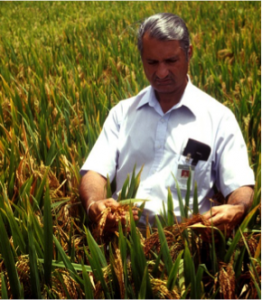
Gurdev Khush at IRRI. Photo credit: IRRI photos. Reproduced under a Creative Commons license 2.0.
This week’s blog post has been written by agronomist and geneticist Gurdev Khush. Gurdev had a major role to play in the Green Revolution, and while working at the International Rice Research Institute (IRRI) developed more than 300 rice varieties, one of which (IR36) became the most widely planted variety of rice. The impact and significance of his work has been recognized by numerous awards including the World Food Prize in 1996, the Wolf Prize in Agriculture in 2000, the Golden Sickle Award in 2007, and in 1987 the Japan Prize.
Our civilization developed with the domestication of plants for food, fiber and shelter about 10,000 years ago. Since then we have made constant improvements to these domesticated plants based on genetic diversity. It is the conservation, evaluation and utilization of this genetic diversity that will be essential for further improvements in our food crops and world food security.
Gene banks conserve biodiversity
The first important step in conserving biodiversity was the establishment of a gene bank by Nikolai Vavilov at the Leningrad Seedbank in Russia during the 1920s. In subsequent years more gene banks were created in developed countries, and the Green Revolution provided major impetus for the establishment of gene banks in developing countries. The first gene bank for the conservation of rice germplasm was organized after IRRI was established in the Philippines in 1960. Other rice growing countries followed suit and now most of them have their own gene banks.
The IRRI gene bank has over 120,000 entries
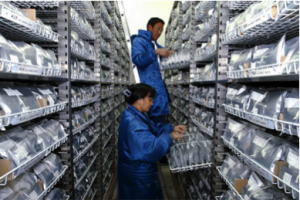
The medium term storage unit of the IRRI seed bank. Photo credit: IRRI photos. Reproduced under a Creative Commons license 2.0.
The IRRI gene bank has progressively grown from a few thousand entries in 1962 to over 120,000 entries today, including accessions of all the wild species. The germplasm is stored under two-temperature and humidity regimes. The medium term store keeps seeds at 4ºC and a relative humidity of 35% for 30–40 years, while in the longer term store, maintained at –10ºC and a relative humidity of 20%, seeds are expected to remain viable for 100 years.
IRRI accessions are evaluated for morphological traits, grain quality characteristics, disease and insect resistance, and for tolerance to abiotic stresses such as drought, floods, problem soils and adverse temperatures. These are all important characteristics in terms of breeding resilient and high yielding rice varieties for the future.
Selection of new rice varieties
Numerous landraces have been utilized for breeding high yielding rice varieties. The first high yielding variety, IR8, was developed from a cross between two landraces, one from Indonesia and the other from China. Another variety, IR64, is one of the most widely grown rice varieties, and has 19 landraces and one wild species in its ancestry.
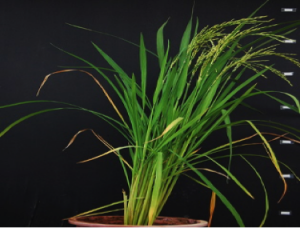
Rice variety IR64, one of the most widely grown rice varieties. Photo credit: IRRI photos. Used under Creative Commons license 2.0.
Ensuring future food security
Gene banks have played an important role in world food security. However, as the population grows there are now even bigger challenges for meeting demand. Climate change and increased competition for land and water resources further magnify the problem. We need to breed climate resilient crop varieties with higher productivity, durable resistance to diseases and insects, and tolerance to abiotic stresses. Success will depend upon the continuous availability of genetic diversity; we must redouble our efforts to unlock the variability currently preserved in our gene banks.
Diversity Seek Initiative
Establishment of the Diversity Seek Initiative (DivSeek) and the proposed Digital Seed Bank, under the auspices of the Global Plant Council, is a welcome development.
The aim of DivSeek is to develop a unified, coordinated and cohesive information management platform to provide easy access to genotypic and phenotypic data on germplasm preserved in gene banks. It is an international effort to bring together gene bank curators, plant breeders and biological researchers. To begin with, the project will develop standards and generate genotypic, transcriptome and phenotypic information for cassava, rice and wheat diversity. This will form the foundation of the Digital Seed Bank, a novel type of database containing standardized and integrated molecular information on crop diversity. The information from this database will be publicly available, and will be of enormous scientific and practical value. It has the potential to significantly increase our understanding of the molecular basis of crop diversity, and its application in breeding programs.
If your organization is interested in joining DivSeek, information can be found here. Alternatively, sign up to the mailing list to keep up to date with the initiative.